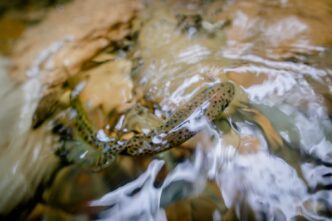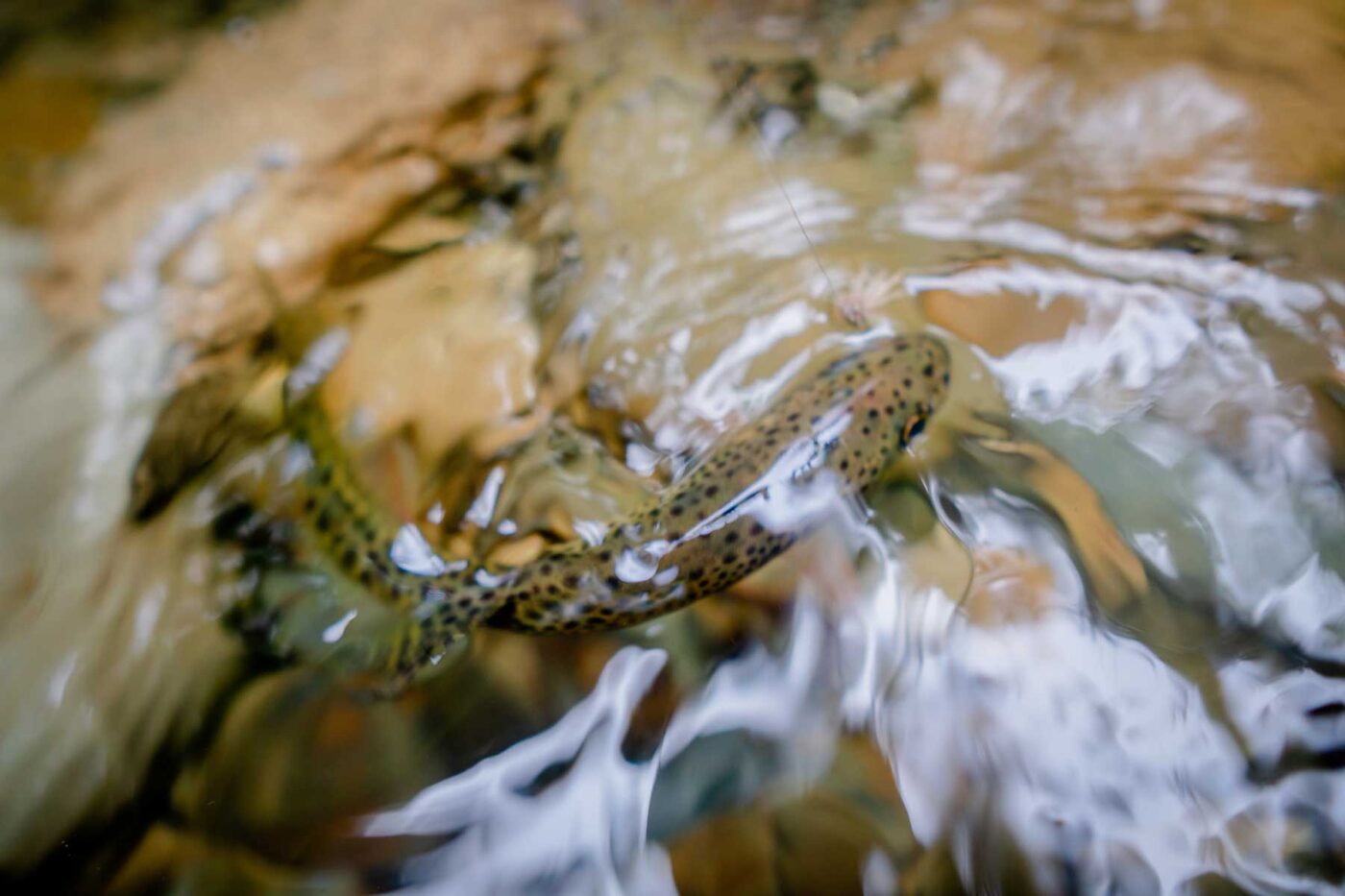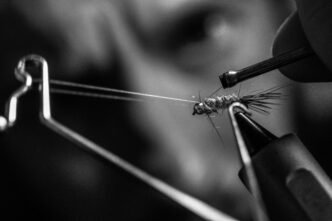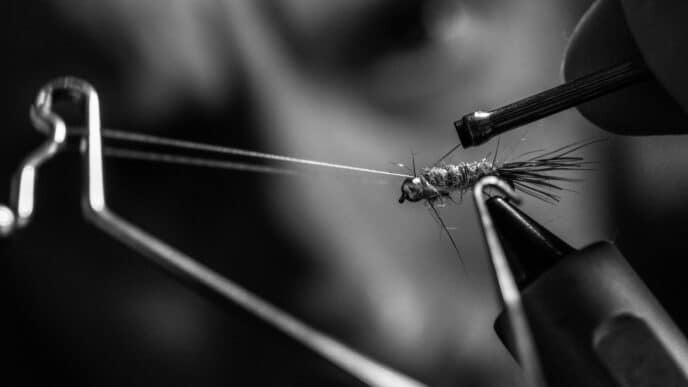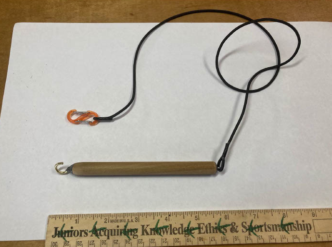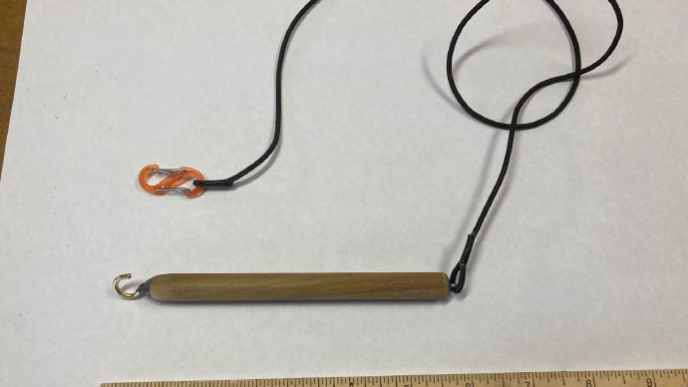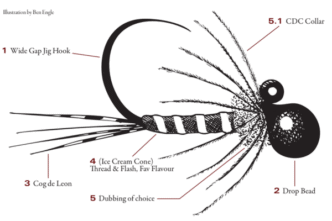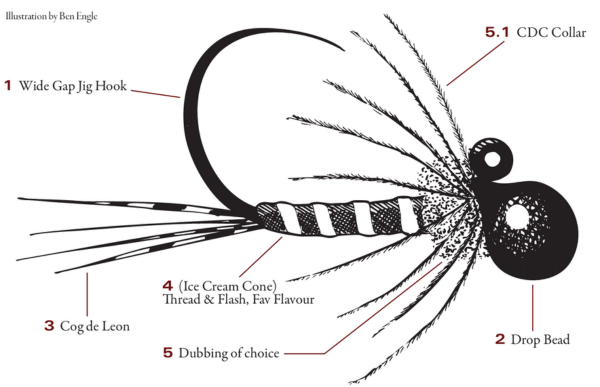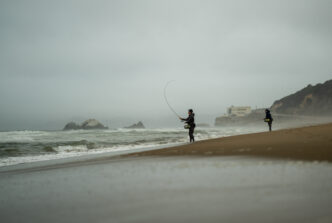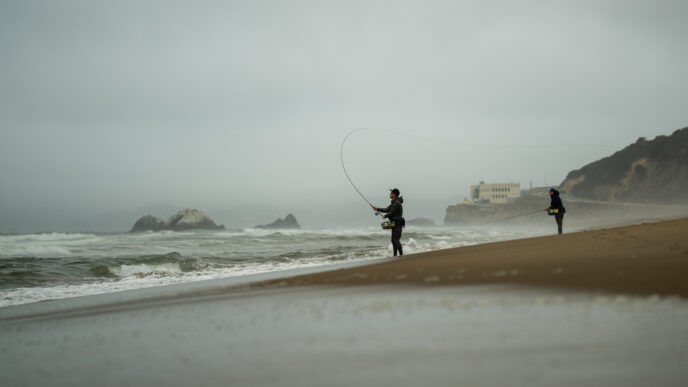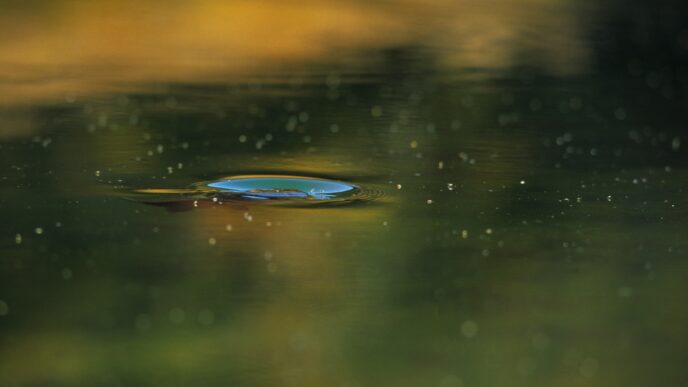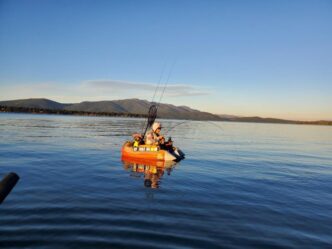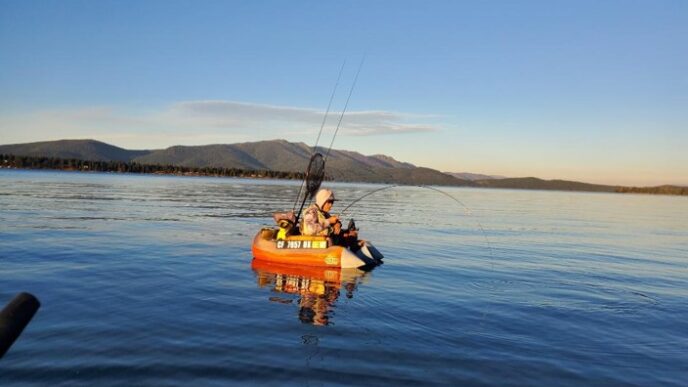One of the things I love most about fly fishing is that there’s rarely a single correct way to do something. Sure, some anglers will passionately argue otherwise—the guide during a pre-trip talk, the veteran in the fly club, or the guy at the casting pond eager to preach the “right way” to do XYZ. And I appreciate that passion.
I’ll admit, I have my own ingrained habits and preferences, but fly fishing has a way of humbling you. I’m reminded of a quote I once read, “If you think you have it figured out, you’ve stopped learning.”
As a guide and angler, I spend a lot of time discussing the “right” way to set the hook. But let me be clear: I haven’t cracked the code. There are always exceptions. The truth is, when it comes to hook sets, more can go wrong than right.
To dig deeper, I reached out to friends, mentors, and fellow guides for their insights. The more I asked, the more I found myself in a cycle of contradictions—every tip came with an exception, every mistake had a scenario where it somehow worked. My good friend and mentor, Jason Lozano of 530 Outfitters, put it best, “The right way to set the hook is an argument that’s been going on for generations. It’s one of my favorite topics to bring up after a few riverside beers—always good for ruffling feathers on the drive home.”
But Jason’s most important point was this: “Whether you’re fishing from a drift boat, wading nymphs or dries, swinging flies, or stripping for stripers, there’s always a good way to set the hook and a bad way. But one thing is always true—you have to be prepared.”
Being ready to connect with a fish is more about believing it will happen and having confidence in your skills, fly selection, and the water you’re fishing. “Don’t be surprised when the indicator goes down. Don’t whiff the set on the dry fly eat because you ‘didn’t think that would ever happen,’” Jason adds. “And certainly be ready to drop the loop, sweep towards the bank, and let the reel sing when that tug finally happens.”
That struck a chord. I thought back to one of the biggest stripers I ever hooked—and lost—because I wasn’t ready. My friend and I were mid-debate about whether Joe Torre was a great baseball manager or just had the best teams money could buy. As I passionately argued my case, my fly got crushed. I botched the hook set, and after a few massive headshakes, my line went slack. I wasn’t prepared, and I’ll never look at Joe Torre the same way again.
Focus, belief, and confidence are mandatory in fly fishing. Over the years, I’ve had some incredible anglers in my boat, and they all shared one common trait—focus. I once guided a well-known saltwater angler who was filming a TV episode on the Lower Sacramento. He had never fished a heavy nymph rig before, but the moment he got dialed in, he locked his focus. When that indicator twitched, he was tight to a fish before I could even say, “Set!”
Fly fishing constantly reminds us that many things can work—and many things can fail. Whether it’s obscure fly patterns, unorthodox presentations, or wildly different casting styles, the one thing I’m certain of is this: the moment you think you have it all figured out, you stop growing as an angler. That said, there’s one principle I think we can all agree on when it comes to setting the hook—be ready.
Read on for advice on different types of hook sets from some expert guides around the state.
STRIP SETTING FOR BASS
By Hogan Brown
When fishing for striped bass and other predator fish that eat a stripped fly, a solid strip set is the key to success—meaning hooking and hopefully landing the fish. Simply put, the hook is set by not raising the rod until the hook is driven into the fish by a firm strip or two.
The biggest fault I see when people first learn to strip set is not stripping or setting the hook hard enough, usually for fear of breaking the fish off. If the tippet is strong enough for strip setting, it’s strong enough not to break on the hook set. Can you break off larger-than-average fish on a hook set? Of course—but that’s part of the game.
The second most common mistake is lifting the rod or “trout setting” when a fish grabs the fly. This loads the rod, preventing a solid hook set, while moving the fly out of a horizontal path and out of the fish’s mouth. It can also put slack in the line, allowing the fish to shake the hook.
The best advice? Strip through the grab. When you feel that initial grab, keep stripping. Don’t stop or lift your rod—just strip. When you feel that hard connection after a few strips, then lift the rod.
DRY FLY HOOK SETS FOR TROUT
By John Fochetti & Matt Heron
Dry fly hook sets for trout can be tricky because not all situations are the same.
Waiting for the fish to actually have the fly in its mouth is the most important factor. That’s why there should be a slight pause after the fish sips a dry fly. This is where the saying “God Save the Queen” comes from—you’re supposed to say it before setting the hook. Notice I emphasized sips.
When fishing slow water or a spinner fall, fish tend to gently sip the fly. It’s crucial to wait until the fish has turned its head back down into the water before setting the hook. At that moment, use a minimal-power, straight-up hook set.
Of course, there are exceptions. If fish are smashing caddis in fast riffles or devouring Hexagenia mayflies, you don’t have to wait as long. A quicker response works just fine. Again, use a straight-up hook set with minimal power.
Matt agrees that setting the hook too early is one of the biggest mistakes anglers make. It’s common for the eager angler to ‘jump the gun’ and set while the fish is attempting to eat the fly. Admittedly, adrenaline runs high when you see them coming.
He also points out another common mistake—setting upstream after a fish takes a dry fly. Setting in the same direction the fly entered the trout’s mouth is a surefire way to pull it right out. Instead, always set downstream at an ascending 45-degree angle to ensure a solid hook-up.
INDICATOR FISHING IN A DRIFT BOAT
By Ben Thompson
To have success setting the hook while indicator fishing from a drift boat, follow these three tips:
Speed: The hook set should be quick but not overly hard. As soon as the indicator moves, swing until you feel the weight of the fish—then stop so you don’t snap the tippet. How big of a hookset you use is completely situational—if you are in shallow water on a downstream mend taught to the flies, you will need a much smaller hookset than when fishing a deep flat with a big upstream mend and a lot of slack. How hard you swing is also influenced by the tippet size. You can swing a lot harder on 2-3X than you can 5-6X.
Direction: A downstream hook set is ideal when nymphing. Trout face upstream, so setting downstream drives the hook into the corner of their mouth. Setting upstream pulls the flies out of their mouth.
When the fish moves to eat your fly and you set downstream, it sticks it in the corner of their mouth because you are yanking your rod in that direction (towards their tail). Setting the hook upstream essentially pulls the flies back out of the fish’s mouth. Another benefit of the downstream hookset is that, no matter which way you mend it, the majority of the time the flies are going to be upstream, behind the indicator because of the difference in current speeds. If you set upstream, you will have to set through the slack of the angle of the leader. Setting downstream, you will come tight on the flies quicker.
A straight-up hookset is okay. Many people prefer this so that the angler in the back of the boat does not hit the rower or throw the flies into the boat or other angler after a missed downstream hookset. I prefer to get hit in the head now and then in the name of sticking more fish.
Quickness: Reacting to the slightest unnatural movement in the indicator is key.
Boat dynamics can get interesting as the guide instructs the anglers when to set. I try and have a mellow, jovial nature and the first, “Set” is usually in a normal talking voice, then the second is a bit louder, and the third a bit more urgent and exclamatory. An angler should always try to hit it on the first “Set.” I try to balance instructing my clients how to effectively catch fish while keeping them happy.
I sit in the middle of the boat staring at bobbers a lot and have developed a keen eye for the tiniest of unnatural movements. Bill, one of my favorite clients, considers it a big win if he is able to get a hookset in before I can say, “Set.” There are clients who are fine with a lot of help, like the young man who simply could not register his brain to set the hook when his bobber went down. He told me, “I’m not getting it, just scream ‘set’ as loud as you can and I will lift the rod.”
Then there are those who prefer little to no prompts. I had a gentleman on the Lower Sacramento River last year fishing for trout and, after landing the first few fish, he told me, “You’re doing a great job. Keep putting on the right flies and putting me on fish, but when the indicator goes down, do not say a word. Do not say ‘set’ or make any noise. It is my job as the angler to set the hook.” I had to fully recalibrate my brain in order to do what he wanted. What can you do? I let out a few grunts and groans throughout the rest of the day and, whenever we were dropping into an A spot, would physically bite down on my tongue to not let an unwanted “Set” loose. I must have stayed quite enough because he came back this year.
I’ve learned everyone is different. Overall, set fast, set downstream, trying not to hit your buddy, and set quick.
SWINGING FOR STEELHEAD
By Tom Mahan
This is such an interesting topic. The inherent unknown that comes with the art of hooking steelhead on the swung fly creates many versions of what to do and what not to do. Each and every scenario is vastly different. Therefore, there is and never will be any overarching data to suggest “the way” to stay connected to a steelhead.
There is one universal truth—hooking a steelhead is 100% situational. Period! Understanding that, here are some basic pointers for a hook set on the swung fly.
1. While fishing faster water like riffles, runs, quick glides, or pushy tailouts, not much is needed to set the hook. In these scenarios, steelhead will typically smash and grab, meaning they will turn as soon as they eat the fly. The pressure of the current and angle of the fish relative to the fly creates a situation where the fish hooks itself.
2. If fishing your fly deep into boily hang downs, cutbanks, and grease pots where little to no current exists, you will have to play a more active role in ensuring the hook is set. The fish will not typically turn and hook itself as it does in faster water.
I am a hooksetter through and through—regardless of the situation, I ALWAYS set the hook. I also believe that I will hook a fish with every cast I make so I’m ready to react when I feel the slightest take.
My advice, go out there, try everything, lose fish, land fish, enjoy the experience. Be willing to figure it out on your own and understand that losing a few fish here and there will only add to your own advancement and understanding. Failing is the best way to learn.
The only certainty in fly fishing is that nothing is certain. Stay focused, stay confident, and be prepared.
Final Thought: Set Downstream, Stay Ready, and Trust Your Instincts


